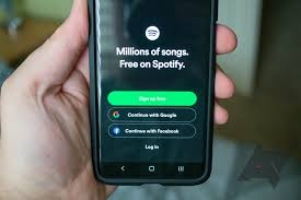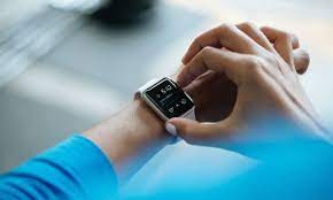Press Release
3 Golang Tips for Scraping Like a Pro | Guest Blog News

The increasing importance of web scraping for businesses and personal use points to the need to have a web scraper. You can either purchase such a tool from a reliable service provider. Alternatively, you can create one from scratch using programming languages and frameworks best suited for web scraping. Python, PHP, NodeJS, Ruby, and Golang are some examples of such languages. This article will explore the Golang web scraper, detailing 3 Golang tips for web scraping like a professional. Let’s start.
What is Web Scraping?
Web scraping refers to the practice of using bots, known as web scrapers, to extract publicly available data from websites. It offers numerous benefits to both businesses and individuals. For instance, companies can collect publicly available data on the number of competitors in a market, their pricing strategies, and products in the market. By analyzing this data, companies can develop better go-to-market strategies (if they are new to the market) or competitive prices for their products and services. On the other hand, people can use web scraping to gather real-time updates from job or news aggregation sites.
As stated, businesses and people can create web scrapers using several programming languages, including Golang.
What is Golang?
Golang or Go is a general-purpose compiled programming language invented by Google in 2007 and released to the public in 2012. It is based on the C programming language. Golang boasts numerous functionality that has influenced its popularity within the developer community.
Go is renowned for the following features:
Memory safety
Garbage collection
Simplicity
Speed
Run-time efficiency
Built-in concurrency
Multiprocessing and high-performance networking capabilities
High usability
A comprehensive suite of tools and frameworks
Developers have capitalized on these features to extend Golang’s usability beyond what its inventors had initially envisioned. Google’s developers had created Go for use in networking and infrastructure. Currently, however, Golang is used in game development, creating back-end applications (Application Programming Interfaces or APIs), automation of DevOps and site reliability functions, web scraping, and more.
Web Scraping: Building a Golang Web Scraper
With Golang, you can extract data from websites like a pro. This is because there are different web scraping frameworks containing prewritten code tools. These frameworks ensure that you do not have to write the code from scratch. This, coupled with the fact that the Go language is easy to learn, fast, simplistic, and has built-in concurrency (which enables it to undertake multiple tasks simultaneously), makes Golang web scrapers extremely useful.
What should you look out for when creating a Golang web scraper? Here are 3 Golang tips that will help you scrape like a pro:
Pick the right frameworks
Use multiple collectors
Ensure your callbacks are ordered correctly
Right Framework
There are numerous Golang web scraping frameworks. These include Colly, soup (not to be confused with BeautifulSoup Python library), Ferret, Hakrawler, and Gocrawl. Colly is the most popular of the listed frameworks. Its popularity implies that multiple tutorials on using it are already available, either in written or video formats. For this reason, Colly offers convenience and ease of use.
At the same time, Colly has numerous features that make it the ideal framework for creating a Golang web scraper. These features are:
Caching capabilities;
Support for request delays and the ability to limit the maximum number of concurrent tasks per domain – this is particularly useful as it helps mimic human behavior, preventing the website from blocking the requests on the grounds of suspicious activities;
It offers Robots.txt support, enabling the Golang web scraper to avoid restricted web pages;
Colly enables parallel/async/sync scraping;
It is fast;
This framework automatically handles sessions and cookies.
Use Multiple Collectors
A Collector object is the main entity in the Colly framework. It oversees communication within a network. It also ensures that the attached callback functions are executed while the collector object runs.
It is noteworthy that the collector object limits the scope of a web scraping job. To circumvent this problem and ensure that the Golang web scraper can undertake large-scale web scraping, you can use multiple Collector objects.
Order the Callbacks Correctly
A callback is a function attached to the Collector object that controls data extraction from websites. For successful data extraction, the callback functions should be ordered such that the procedure mimics how a web-based application would ordinarily send requests and receive responses. The various callback functions include:
Onrequest;
OnError;
OnResponseHeaders;
OnResponse;
OnHTML (uses a CSS selector to extract text from different HTML elements);
OnXML;
OnScraped.
Notably, the OnHTML function can also be used to create a CSV file on which the scraped data can then be written.
Going through the Go Colly documentation is also an essential step that guarantees success.
Conclusion
Golang is a fast programming language whose numerous features make it ideal for applications such as creating web scrapers. To build a Golang web scraper, choose the proper framework, use Collector objects, and order the callback functions correctly. If you’re searching for an in-depth tutorial on building a Golang web scraper, Oxylabs wrote a blog post that will help you.
Press Release
Russian processor manufacturers are prohibited from using ARM because of UK sanctions.

On Wednesday, the UK government expanded its list of sanctioned Russian organisations by 63. The two most significant chip manufacturers in Russia, Baikal Electronics and MCST (Moscow Center of SPARC Technologies), are among them.
Since the licensee, Arm Ltd., is situated in Cambridge, England, and must abide by the penalties, the two sanctioned firms will now be denied access to the ARM architecture.
contacting inactive entities
The UK government provided the following justification for the restrictive measures put in place against Baikal and MCST:
The clause’s goal is to persuade Russia to stop acting in a way that threatens Ukraine’s territorial integrity, sovereignty, or independence or that destabilises Ukraine.
The two companies are important to Russia’s ambitions to achieve technical independence since they are anticipated to step up and fill the gaps left by the absence of processors built by Western chip manufacturers like Intel and AMD.
The two currently available most cutting-edge processors are:
Eight ARM Cortex A57 cores running at 1.5 GHz and an ARM Mali-T628 GPU running at 750 MHz make up the 35 Watt Baikal BE-M1000 (28nm) processor.
MCST Elbrus-16S (28nm), a 16-core processor clocked at 2.0 GHz, is capable of 1.5 TFLOP calculations, which is a tenth of what an Xbox Series X can do. Baikal BE-S1000 (16nm), a 120 Watt processor featuring 48 ARM cores clocked at 2.0 GHz, MCST Elbrus-8C (28nm), a 70 Watt processor featuring eight cores clocked at 1.3 GHz,
Russian businesses and organisations that evaluated these chips in demanding applications claim that they fall short of industry standards and are even unacceptably priced.
Although the performance of these processors and the far poorer mid-tier and low-tier chips with the Baikal and MCST stickers is not very spectacular, they could keep some crucial components of the Russian IT sector operating amid shortages.
In reality, MCST recently bragged that it was “rushing to the rescue” of vital Russian enterprises and organisations, successfully filling the void left in the domestic market.
sanctions’ effects
Given that Russia has previously demonstrated its willingness to relax licencing requirements in order to mitigate the consequences of Western-imposed limitations, it is simple to discount the application and impact of the UK’s sanctions.
It is crucial to keep in mind that the Baikal and MCST processors are produced in foreign foundries, such as those owned by Samsung and TSMC, and that neither of them would violate Arm’s licencing policies or international law to serve Russian objectives.
The only option is to bring the production home and break the law as Baikal, which has a legitimate licence to produce at 16nm, only has a design licence for its next products.
The fact that chip fabrication in Russia can only now be done at the 90nm node level presents yet another significant issue. That was the same technology NVIDIA employed in 2006 for its GeForce 7000-series GPUs.
To combat this in April 2022, the Russian government has already approved an investment of 3.19 trillion rubles (38.2 billion USD), although increasing domestic production will take many years. In the best-case scenarios, 28nm circuits will be able to be produced by Russian foundries by 2030.
Press Release
Zuckerberg says Facebook is dealing with Spotify on a songs assimilation job codenamed Task Boombox (Salvador Rodriguez/CNBC).

Zuckerberg says Facebook is working with Spotify on a music integration project codenamed Project Boombox (Salvador Rodriguez/CNBC)
Salvador Rodriguez / CNBC:
Zuckerberg says Facebook is working with Spotify on a music integration project codenamed Project Boombox — – Facebook CEO Mark Zuckerberg on Monday announced that the company is building audio features where users can engage in real-time conversations with others.
Press Release
THE UNITIONS OF WEARABLE DEVICE SHIPMENTS FOR 2020 GREW 28.4% TO 444.7M UNITS, TEAHING FROM APPLE, WHICH GREW 27.2% IN Q4 AND HAS 36.2% MARKETSHARE, FOLLOWED BY XIAOMI AT *9% (IDC).

Wearable device shipments for 2020 grew 28.4% to 444.7M units globally, led by Apple which grew 27.2% in Q4 and has 36.2% marketshare, followed by Xiaomi at ~9% — Worldwide shipments of wearable devices reached 153.5 million in the fourth quarter of 2020 (4Q20), a year-over-year increase …
-

 Social Media7 months ago
Social Media7 months agoWho is Rouba Saadeh?
-

 Social Media7 months ago
Social Media7 months agoMati Marroni Instagram Wiki (Model’s Age, Net Worth, Body Measurements, Marriage)
-

 Entertainment7 months ago
Entertainment7 months ago12 Online Streaming Sites that Serve as Best Alternatives to CouchTuner
-

 Entertainment7 months ago
Entertainment7 months agoMovierulz Website: Movierulzz 2021 Latest Movies on Movierulz.com
-

 Social Media7 months ago
Social Media7 months agoBrooke Daniells: Everything About Catherine Bell’s Partner
-

 Guides7 months ago
Guides7 months agoHow to make selfies with Dorian Rossini
-

 Entertainment7 months ago
Entertainment7 months ago4MovieRulz Download Telegu Movies | 3MovieRulz | Movierulz.com
-

 Entertainment7 months ago
Entertainment7 months agoMangastream is Not Functional – How About Taking Alternative Online Movie Sites in 2021






